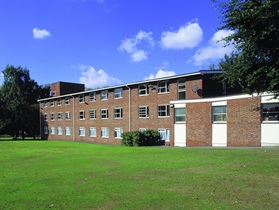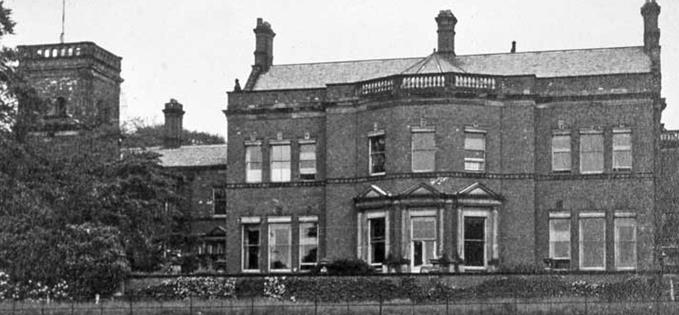DALE House, one of the six student blocks in the University of Liverpool's Carnatic student village, is to be demolished to make way for a housing estate.
Countryside Properties plans to build 65 four- and five-bedroom houses on the prestigious site in Elmswood Road, Mossley Hill, just a few hundred yards from the controversial Sefton Park Meadows.
Even though the planning application for the Dale Hall site has not yet been given the go-ahead, the scheme is already being marketed on the company’s website.
 Dale Hall: Prime location in the burbs
Dale Hall: Prime location in the burbsThe University of Liverpool has begun work on a £90 million project to create new residences and renovate existing buildings on its Mossley Hill student accommodation site.
It states: “The development is located on Elmswood Rd in the Mossley Hill a stunning conservation area of Liverpool. With a range of well designed and excellently specified new homes Countryside are pleased to be working to in the area and to bring a range of stunning homes to the location.”
Dale Hall, opened in 1974 with rooms for 265 students, will finally closing its doors to students this year.
Its closure is part of £250m investment by the University of Liverpool. The investment will provide a self-contained student village, including new catering and sports facilities at the university’s Greenbank site.
 The new Dale Hall development
The new Dale Hall developmentA university spokeswoman told Liverpool Confidential: “As new residences open, older accommodation buildings at the university will close. Dale Hall, part of Carnatic site, will officially close in 2015, and its sporting facilities, which include squash and tennis courts, will be upgraded and rehoused at Greenbank halls, where they will be available to students, staff, and the local community from 2016.
“Over a period of four years rooms available to students studying at the university will increase by approximately 40 percent, offering en suite facilities, cafeteria, and computer rooms. The university’s historic 18th Century Greenbank House, which was left to the university by the Rathbone family, is also set to benefit from a £5 million investment.”
Meanwhile, the one-time Government office complex, Cressington House in St Mary’s Road, Grassendale, is to be demolished to make way for housing. The building closed when the Government declared it to be ‘surplus to requirements.’
The scheme for 32 mainly detached and semi-detached two-storey houses is being recommended for approval at Tuesday’s meeting of the city council planning committee.
The four-storey office block is a familiar landmark along the main route into the city has over the years has housed various government departments, including the conciliation service ACAS and the Department of Employment.
Built on diamonds and booty
 The second incarnation of Carnatic Hall
The second incarnation of Carnatic HallThe Carnatic campus spans both sides of Elmswood Road. Opposite Dale Hall is the site of the original location of Mossley Hill House (known to locals as Carnatic Hall), built by Liverpool shipwright Peter Baker around 1779.
The money to build this house came from the sale of a ship called the "Carnatic", which was captured by Baker's ship, The Mentor, from the French in 1788. The cargo was worth £400,000, with £135,000 in diamonds alone, a fortune at that time.
In 1891 it was almost completely destroyed by fire and the then owner, Walter Holland, had a new similar styled hall erected. In 1947 the University of Liverpool purchased the hall outright and, until it was demolished in 1964, the University of Liverpool Museum used the building
Salisbury, McNair and Rankin Hall were built on the Mossley Hill site between 1964 and 1972. More residences were added, Morton House and Lady Mountford Hall between 1971 and in1974, and Dale Hall.
By this period, mixed halls were the norm although Derby, McNair and Rankin Halls were restricted to men, and Salisbury to women. However, at the present time, all halls on the site are mixed.







